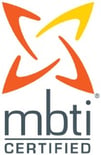Your Team Contribution Isn't about Doing MORE... It's about doing THIS
You're working really hard to make a strong team contribution, pouring yourself into the work and wondering why it's not making the difference you'd hoped.

Or maybe all that hard work isn't being recognized. You might even feel taken for granted. Chances are that you're aiming for quantity instead of quality. Your team contribution is limited by over-reaching. When any one member of the team tries to do the bulk of the work, one of two things inevitably happens.
- Others step aside and no longer contribute as much. Why should they? When they see you doing all the work, they no longer feel needed. They have other things to do. They assume (because your actions imply it), that you want to do all the work. For you, this is what happens over and over again, dating back to group projects in high school. You haven't discovered yet that you're sidelining your team members and putting yourself in this position. OR...
- You reach a breaking point. Your frustration at being left with all the work clouds your memories of how you got to this point by taking it all on. You may even lash out at others, which takes them by surprise because they genuinely believed this is what you wanted.
So if it's not quantity of work that maximizes your team contribution, that leaves quality of work. And you can't be good at everything.
To Improve Your Team Contribution, Get Acquainted with Your Strengths and Style Preferences
What are you good at doing? What do you like doing? These are valid questions when it comes to divvying up team tasks. Your strongest contributions to your team will spring from doing what you enjoy and excel at doing.
If you're not sure about your own preferences and strengths in a team, take some time to reflect on this. You may find it useful to do some assessment work to get clarity about this.
There are 16 dominant and natural ways to contribute to a team, according to the Myer-Briggs Type Indicator body of work. Just knowing these 16 natural preferences is a great starting point. The StrengthsFinder is another good tool for understanding what you do best.
This is not to suggest that you should never do work that is outside your comfort zone or work that is less enjoyable for you. But that comes after others have also determined their own preferences and strengths. What's left over still needs to be done, and it will be more palatable when served alongside work you do enjoy.
To Improve the Team Contribution Made by Others, Learn about Their Strengths and Style Preferences
For each member of the team to contribute at a high level, it helps for each individual to understand their own strengths and style preferences. Next step is for every other team member to learn about others' preferences and strengths.
Intact, long-term teams discover this over time. New and dynamic teams seldom take time to explore these important aspects of team composition. That leads to a lot of conflict and inefficiency, ultimately diminishing the team's effectiveness.
Workshops and team retreats that focus on team effectiveness and collaboration may seem like a luxury. But the time and money spent on the front end generally accelerates the team's attainment of goals and preserves group harmony.
To Improve the Overall Team Contribution, Identify Your Collective Strengths and Style Preferences
In addition to learning about and developing an appreciation of others' strengths and style preferences, there's one more thing to identify. That's the team's overall style and strengths.
Every team is a blend of the individuals its made up of. Collectively, the group's dominant strengths and style preferences will significantly influence how the team works. By identifying these factors, teams can avoid disenfranchising some or getting swept up in sameness that doesn't serve the group well.
Putting It All Together Is Easy, Fun and Smart
Understanding yourself, your team members, and your team doesn't have to be difficult. On the contrary, for most team this is liberating and ennobling. It's fun, bonding and a great way to re-set team interactions. 
Here at People First Productivity Solutions, we use the MBTI for achieving all these goals at once. It's one of our "secret weapons" to build organizational strength by putting people first. Our clients find that this tool also helps with team communication, decision-making, problem-solving, collaboration and conflict resolution. That's a lot of bang for the buck!

